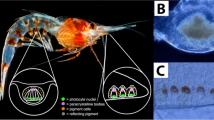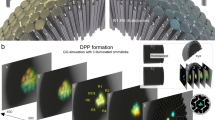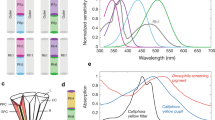Abstract
WE have observed that exposure of anemones to ultraviolet and visible radiations can elicit two specific responses, flexion and retraction of the tentacles. A detailed investigation revealed that these responses were readily differentiated by their spectral region of maximum sensitivity.
This is a preview of subscription content, access via your institution
Access options
Subscribe to this journal
Receive 51 print issues and online access
$199.00 per year
only $3.90 per issue
Buy this article
- Purchase on Springer Link
- Instant access to full article PDF
Prices may be subject to local taxes which are calculated during checkout
Similar content being viewed by others
References
Jagger, J., Introduction to Research in Ultraviolet Photobiology (Prentice-Hall, Englewood Cliffs, NJ, 1967).
North, W. J., and Pantin, C. F. A., Proc. Roy. Soc., B, 148, 385 (1958).
Bullock, T. H., and Horridge, G. A., Structure and Function in the Nervous Systems of Invertebrates, 473 (Freeman, San Francisco, 1954).
Goldsmith, T. H., and Fernandez, H. R., J. Exp. Biol., 49, 669 (1968).
Smith, J. C., and Kimeldorf, D. J., J. Insect Physiol., 10, 839 (1964).
Author information
Authors and Affiliations
Rights and permissions
About this article
Cite this article
CLARK, E., KIMELDORF, D. Tentacle Responses of the Sea Anemone Anthopleura xanthogrammica to Ultraviolet and Visible Radiations. Nature 227, 856–857 (1970). https://doi.org/10.1038/227856a0
Received:
Revised:
Issue Date:
DOI: https://doi.org/10.1038/227856a0
This article is cited by
-
Spektrale Phototaxis von Planktonrotatorien
Experientia (1972)
Comments
By submitting a comment you agree to abide by our Terms and Community Guidelines. If you find something abusive or that does not comply with our terms or guidelines please flag it as inappropriate.



